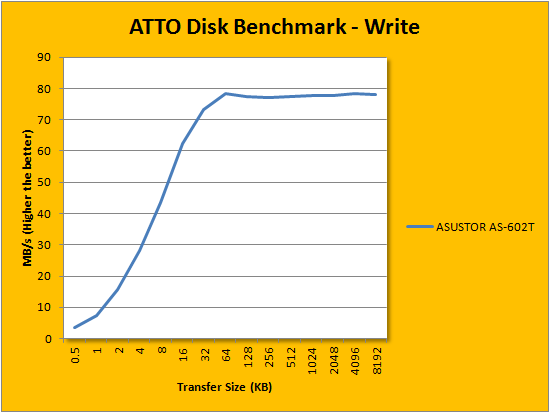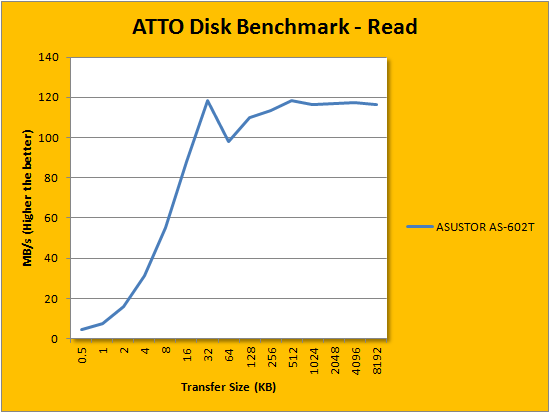Page 6 - Performance and Power Consumption
For our tests, the ASUSTOR AS-602T is connected to our central home network with CAT5e wiring. Our test station is located two rooms away from the NAS to simulate real world performance in a centralized networking environment. To ensure the accuracy of our tests,, one Kingston SSDNow V300 120GB SSD is configured to ensure there is no drive bottleneck in the performance benchmarks. A second Seagate Barracuda 7200.12 500GB hard drive is installed for more realistic power consumption numbers. The client computer is configured with the following specifications:
CPU: Intel Core 2 Quad Q9550
CPU Cooling: OCZ Gladiator
Motherboard: ASUS P5E3-Deluxe
RAM: OCZ Special Ops PC3-10666 4x2GB
Graphics: Palit Radeon HD 4850 Sonic 512MB
Case: NZXT Panzerbox (NZXT 120mm - Back, NZXT 190mm - Top back, NZXT 190mm - Front)
Power: Cooler Master Silent Pro M 1000W
Optical Drive: LG 16X DVD Burner
Hard Drive: OCZ Synapse 64GB, Seagate Barracuda 7200.11 640GB
Operating System: Microsoft Windows 7 Professional x64 SP1


Equipped with our Kingston SSDNow V300 120GB SSD, we can see there were no bottlenecks in terms of disk speed. Over our Gigabit LAN network, we were able to achieve some pretty impressive speeds. Averaging in at 62.3MB/s and 100.65MB/s for write and read speed respectively, we can see that the performance here is pretty good. There really isn't too much to say other than the fact that these speeds are decent and more than enough to carry us through this test. They are very comparable to the QNAP TS-219P II reviewed by my colleague Preston a few years ago.


ATTO disk benchmark provides valuable insight into evaluating disk performance; it is especially valuable since it is not local disk limited like Windows file copy -- but rather the network adapter itself. After first using it in our QNAP TS-559 Pro+ review a couple of years ago, ATTO has been an integral part of our storage benchmarks; used in everything ranging from USB flash drives to solid state disks. Venturing in the area of 116MB/s in read for pretty much everything 32K and up, remember that the theoretical maximum of Gigabit Ethernet is 'only' 125MB/s (1000Mbps / 8). SSD write performance is pegged at nearly 73MB/s for pretty much everything 32K and above as well. Performance here was also pretty decent, but the benchmark did not necessarily show in our Windows file tests.

When it comes to power usage, the ASUSTOR AS-602T uses a relatively low amount of power for a device of this caliber. The most taxing power drain are likely to be the Intel Atom processor and hard drives. The Atom processor gives improved performance compared to ARM CPUs, and of course, x86 support for those who are interested in doing some modding. Peaking at only 28W, I must say the initial power draw isn't all that bad with one SSD and one HDD installed. The network attached storage system idles at 20W, which again is pretty good given the specifications of the AS-602T. On load during our file tests, we hit an average high of around 26W.
Page Index
1. Introduction and Specifications
2. A Closer Look - Hardware
3. Configuration and User Interface, Part I
4. Configuration and User Interface, Part II
5. Configuration and User Interface, Part III
6. Performance and Power Consumption
7. Final Thoughts and Conclusion





